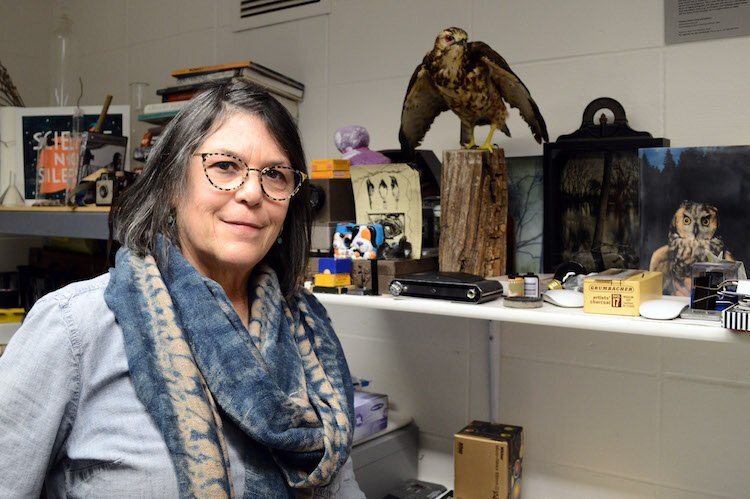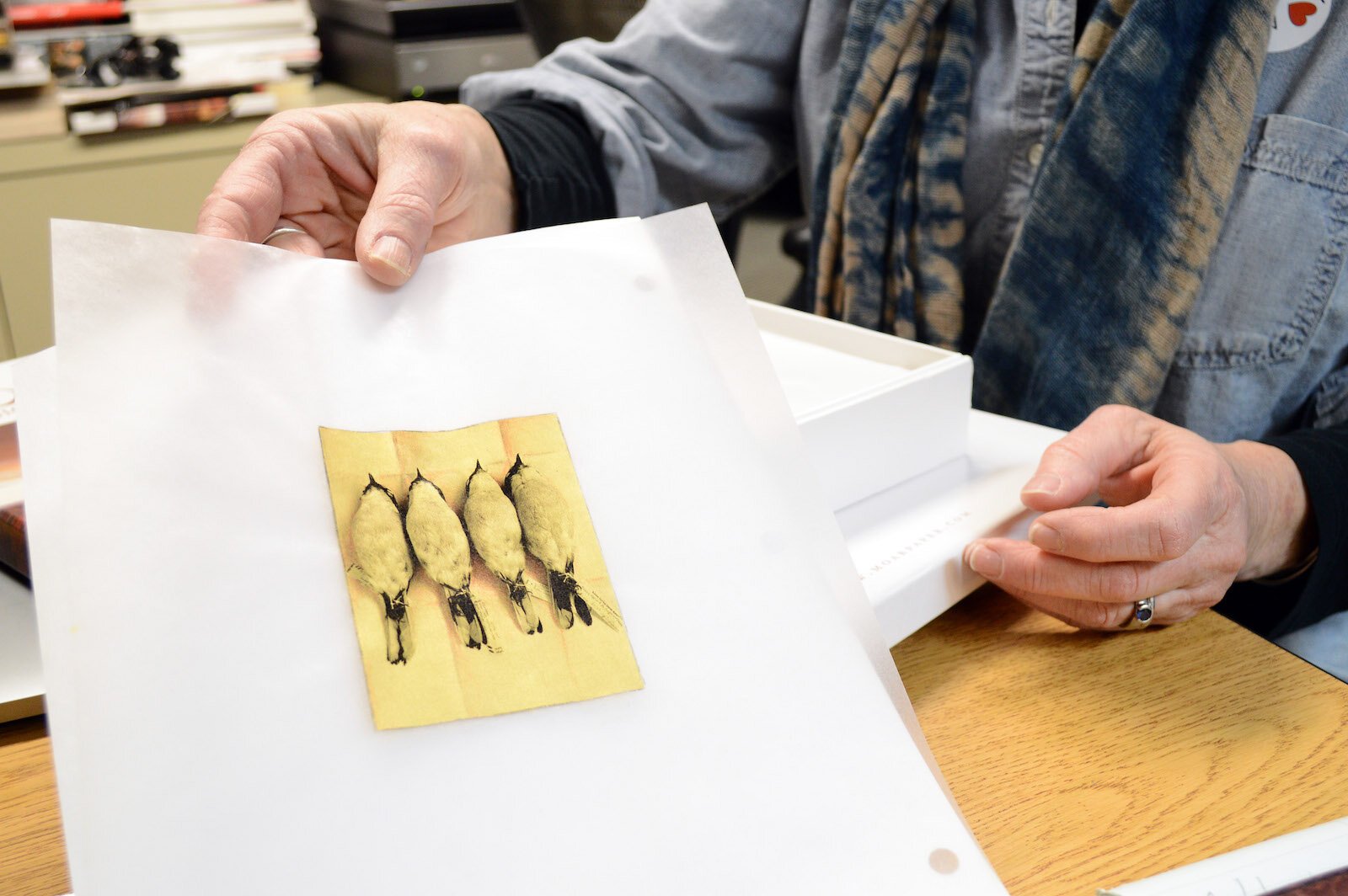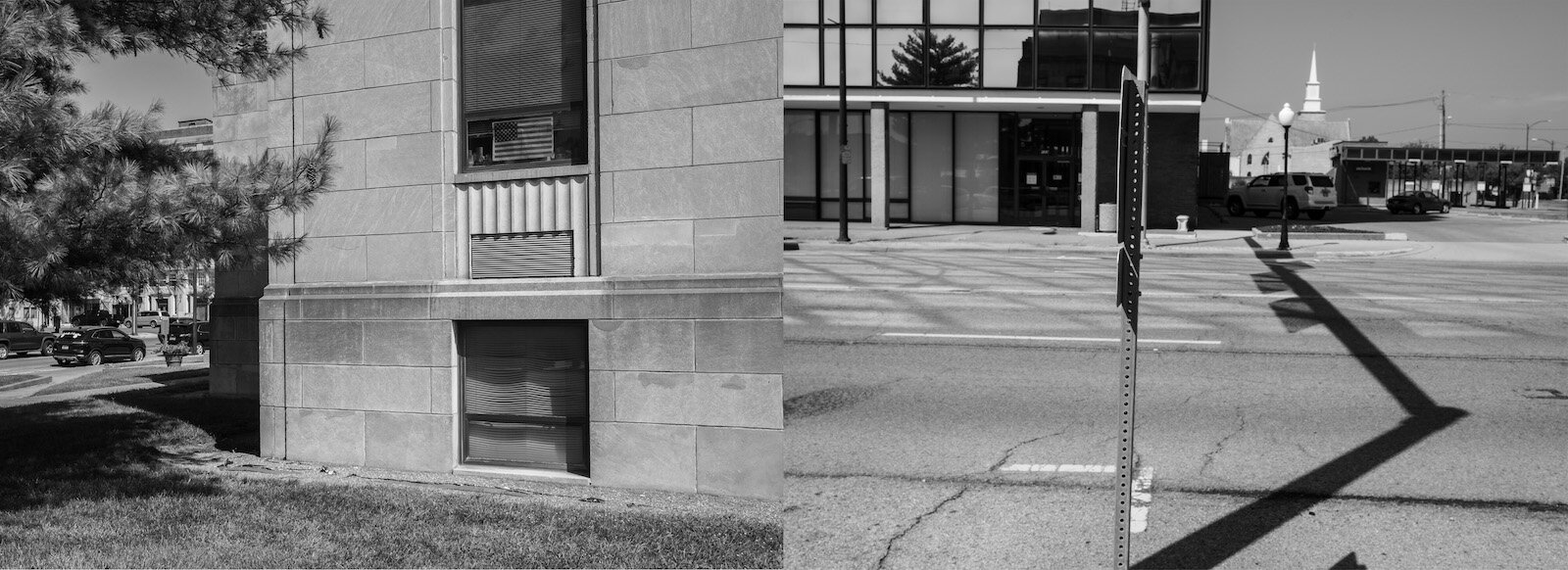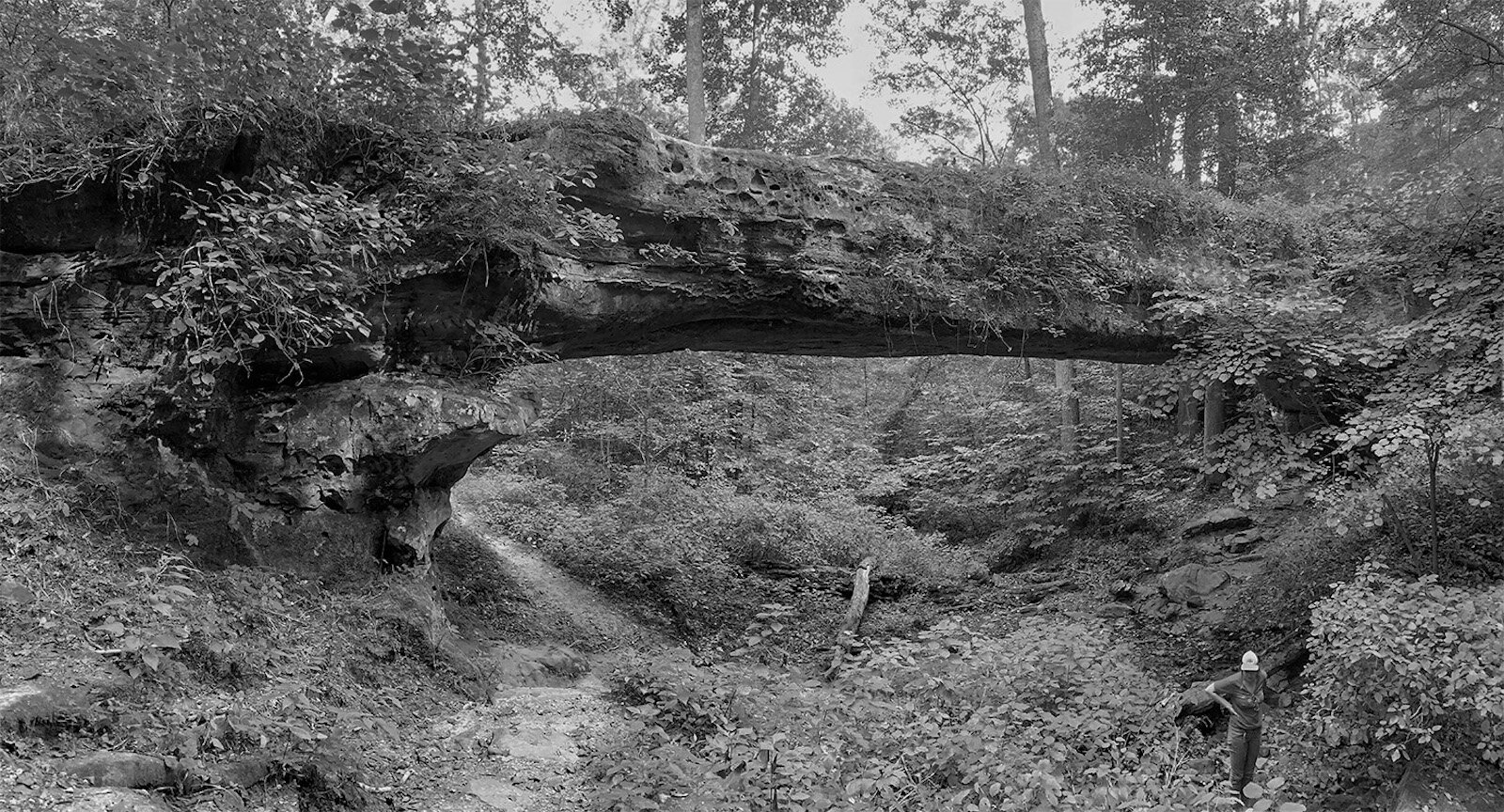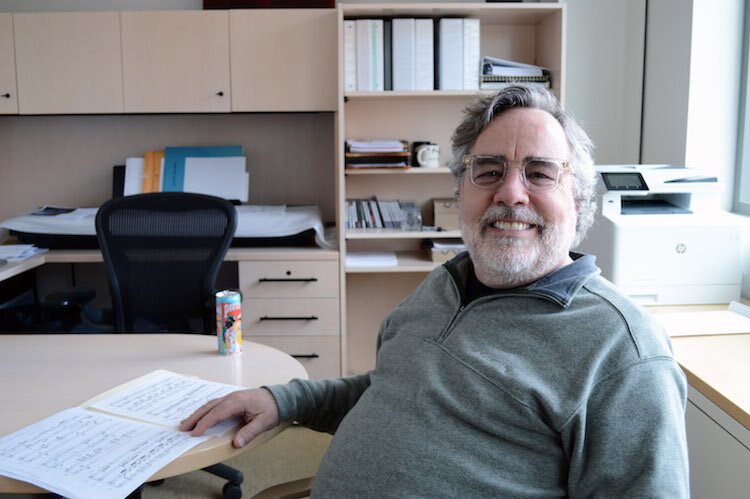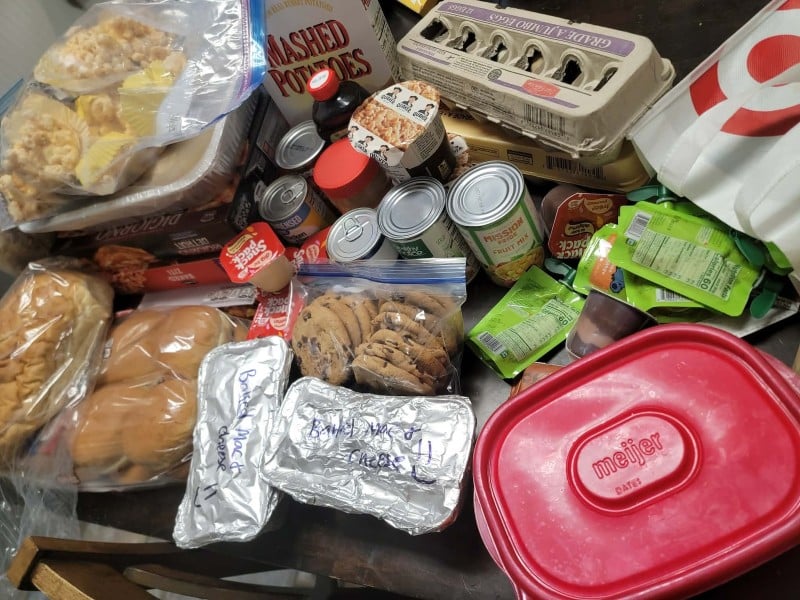Kalamazoo artists develop their work with support from the Artistic Development Initiative
A closer look at four of 15 artists who are developing their skills with the support of the Kalamazoo Artistic Development Initiative.
Editor’s note: This story is part of Southwest Michigan Second Wave’s On the Ground Kalamazoo series.
Composed cats, soul writing, a listening room and a century of bird habitats; these and 11 other projects have just been funded by the Arts Council of Greater Kalamazoo.
They are recipients of the Kalamazoo Artistic Development Initiative Round II grant.
The KADI, funded by the Irving S. Gilmore Foundation, is meant to “support individual artists in their endeavor to develop themselves and their art through projects or professional development.”
Some projects are intensely local, such as Patrick Hershberger’s (otherwise known as the artist Bonus Saves), “The Vine,” a public mural to showcase the Vine neighborhood. Others take artists far from Kalamazoo, such as multi-discipline artist Kelly Vander Kley’s travel study program to work with Italian designers and study early Venetian books in Venice.
We took a close look at four KADI grant recipients and found that their work is as varied as the culture of Kalamazoo.
Authenticity — a venue where one can listen
Ashely Daneman is a jazz singer/songwriter. Originally from Toledo, she moved to New York City to earn her masters at the Manhattan School of Music. She’s recorded, toured, and sung in lots of noisy bars.
She’s always thought that “playing in a bar or restaurant is like being in a bad relationship. Because there’s no mutuality, you’re giving out and no one’s receiving you,” Daneman says. “I just ended up feeling so horrible after those gigs.”
She and husband/trumpet player Benje Daneman came to Kalamazoo about four years ago and began the Jazz & Creative Institute, where they and others teach private music lessons.
They share a storefront on Rose Street with the Kalamazoo Piano Company. Though the room is packed with a lot of ornate keyboards, they’ve managed to make a 50-seat performance space that will become Authenticity.
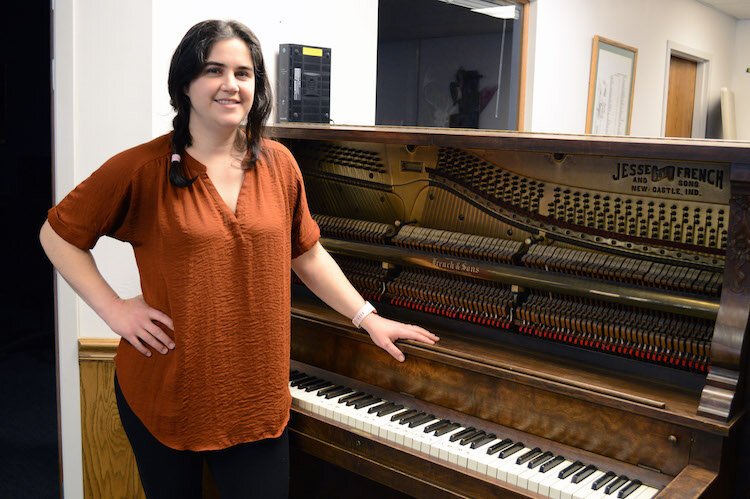
“When I moved to Kalamazoo it felt like there was a gap,” she says. There are a lot of people in the city with master’s degrees in music who want to perform, “but the options to play are mostly bars and restaurants.” There are local universities and presenting organizations like The Gilmore International Keyboard Festival, who, “like most of the people producing concerts, they’re bringing in outsiders — which is great because they’re amazing. Yet, what do you do if you live here, and you’re a very serious performing artist, and you don’t want to play to people who aren’t listening?”
Daneman hopes to introduce the concept of the small-venue listening room to Kalamazoo. “There’s no distraction. You take your seat, and the show is on.”
Her goal is to make Authenticity diverse in musical genres. “This is meant to bridge people together, to create new relationships, to literally put people in the same room who would never find themselves together, and to have them collaborate on music.”
So, might they pair a hip hop artist with a jazz performer? Performers might be even-more disparate in sound, Daneman says.
She remembers John Zorn, New York City jazz saxophonist who’s mixed jazz with extreme heavy metal and other avant garde twists. “He has a performance place in New York City called The Stone, and it is a listening room. You go in, you pay your $10, and the gift is the music. You don’t need a drink or food — those things are nice, but (the listening room) elevates the music. He is certainly somebody who understood that.”
When she lived and performed there, NYC listening rooms were “commonplace. It was part of the culture that we would go out and listen to the music.”
Authenticity will present six spring and six fall concerts. Musicians will be paid from the KADI grant money and ticket proceeds. All performers must live within 30 miles of downtown Kalamazoo. The musician application deadline is March 14. For more information visit here.
Bird habitats captured in photos, ‘real, tactile’
It’s difficult to capture all of the beauty of nature with a camera. A Midwestern prairie, packed with wildflowers 10 feet high, can just look like a mess of weeds with dots of color.
And that songbird that you hear so clearly, swooping over the flowers? Good luck getting a clear shot of it.
“When you go to a place that’s so big and grand, it’s hard to capture it in a camera. So that’s why I try to think, I’m taking my own little slice of the world out, and responding to this place,” photo artist Mary Whalen says.
Whalen’s KADI project, Sights and Sounds/Experiencing a Century of Change, will put her artistically manipulated photos with bird soundscapes by Sharon Gill, associate professor of biological science and ornithology expert at Western Michigan University.
The project is “just a baby right now,” but she expects it to be on display later in the year, perhaps in a venue like the Kalamazoo Nature Center.
Inspired by the book, “Illinois Birds: A Century of Change”, Whalen looked at photos from avian habitat studies in the early 20th century, then went to Illinois to find the same landscapes.
She’s looking at “the differences in the landscape, the grasslands. And in going to someplace like that, it’s so amazing to be out in the middle of nowhere — and when you’re in the middle of Illinois, you’re in the middle of nowhere,” Whalen says.
She’s “exploring this landscape, but also thinking of the purpose of me as an artist responding differently than these researchers, ornithologists, had been. But also just loving the connection with the historical study.”
Whalen, photography and digital media department chair at the Kalamazoo Institute of Arts Newman Art School, says that in a world floating in digital images, her aim is to “let the photos become real, tactile.”
Many of the photos in her project, still in the works, are black and white digital shots printed on vellum, hand-colored and backed with gold. She’s spent the winter shooting taxidermied bird specimens in the collection of the University of Illinois and transforming them into art. “I imagine these specimen images to be small and rather precious, but also, too, the gold gives them a dimension.”
She treated photos of Illinois prairies and woods in similar fashion, or transforming them through photogravure, where a photo is turned into a printing plate, then printed.
If not hand-colored, photos are in black and white. People “fall in love” with the greenery of nature, she says, but Whalen is bringing out the textures, the details.
Though the project puts her eye on areas far from Kalamazoo, Illinois’ “environmental issues are the same for us here in Michigan,” she says.
There’ve been drastic changes between the photos of the 1900s bird studies and what Whalen has found. She’s had to angle herself just right to keep Walmart parking lots out of shots. Natural areas are dwindling, and it seems, in Illinois, “everybody wants to grow corn.”
Her goal is to take a look at the Midwest’s environment, “being aware of how beautiful it is, and how are we going to take care of it. Think about these changes.”
Soul Writing — slow down and “think about what we think about”
Dana Hudson is Great Dane.
“Great Dane is a spoken word artist. I believe that even though I’m a writer and author, my words are meant to be heard, spoken,” Hudson says. She leans toward the performance of poetry, and is also a youth advocate, youth development professional, a teaching artist, and event organizer.
Her style of spoken word is confessional, where she opens herself bare to the audience. “There’s healing that’s happening on the other side of the fence that allows me to be that vulnerable and open in ways that other people aren’t able to be just yet in their journey. There’s invisible work that’s happening that allows me to step into that space.”
With “For the Good: Soul Writing Sessions,” Hudson would like to teach others to open themselves up through writing workshops and open mic performances.
The sessions will be for those 18 and up. Hudson has often taught youth in similar workshops and has been asked if she could include adults.
Her workshops are not a dry, academic process striving for accepted forms of poetry. “What I found that I do really well is, I create a safe space for you to express yourself how you need to. It just so happens that we’ll be doing some writing. If that writing looks and feels like poetry to someone, cool. If it doesn’t, that’s cool, too,” Hudson says.
“I’ve found in these workshop spaces, even as a facilitator working with young folk, it’s an opportunity for me to take risks with my own writing that I don’t take when I’m sitting down to, say, write poetry for the next writing project…. I don’t question myself as much, I don’t judge myself as much. I just let it come out. And what I find at the end of that process, over and over again, it’s always exactly what needs to come out, it’s always exactly what you needed to say.”
This is a therapeutic process. If one isn’t ready to share in front of an audience, “what we share in the space can stay in the space, if you choose to keep it there,” she says.
“When you think about it, we go through our lives, and we don’t take the time to notice ourselves. We don’t take the time and slow down, think about what we think about — if that makes sense.”
Soul writing is “an opportunity for people to sit down and take time for themselves to maybe work through something, talk about something and express something that they haven’t given themselves the space to do just yet.”
The workshops will be every Saturday in September, with the open mic on Oct.16. It’ll all happen at Fire Arts Collaborative. At Fire, “you feel free enough to express yourself without someone telling you how to express yourself,” Hudson says, “with no limitations on how you want to get it out, whatever it is for you.”
Find out how to sign up at Great Dane Poetry on Facebook and Instagram.
Music to match beloved pets, unpredictable animals
David Colson wasn’t a cat person.
“I suppose I’d become a cat person, but I found myself probably earlier in my life not being a cat person,” Colson, WMU School of Music professor of theory and composition, says.
But he’s known cat people, and known cats. In trying to think of a motivating subject for a new piece, Colson says, “I wanted to challenge myself with really trying to bring forth character in my music. And I think cats have some subtle and not so subtle ways of displaying their personality.”
As a composer of modern music, Colson tends toward abstract sonic moods and forms. But cats can have personalities, gentle to wild, that can match the swings of modern compositions.
“Cat Tales: A New Music Composition,” is an eight-movement piece — one version for alto sax, soprano sax, and piano, and another for soprano sax, clarinet and piano — about eight “cats I have known.” They include:
Wally, “a big orange male cat…. He was a cat that I knew 40 years ago, but he’s still imprinted in my mind just how elegant he was. But he was a bossy, tough kind of cat.” He wrote in the sheet music that the mood from musicians should be “cool, but tough.”
“A tiny little female kitten named Ella… that we got for our daughter when she was about 12.” His daughter had trouble sleeping. When Ella arrived, she “sort of understood that her job was to lie next to this little girl until she fell asleep, and then she could get up and do her nocturnal thing. My daughter still has this cat, the cat’s now 16 to 17 years old.” Ella’s musical mood is “nostalgic, sweet and gentle.”
Bother, “a large black male feral cat. He lived in my composition teacher’s back yard.” Colson’s teacher was famed composer William Bolcom. “We’d sit out in the back yard and watch this very large black cat stalk rabbits, and eat rabbits! It was quite shocking, actually, to see that happen.”
The piece closes with Cricket, “a beautiful long-haired black male.” The cat lived in Colson’s neighborhood when he lived in Houston, Texas. “Again, this was a very unpredictable animal, but he was very elegant and very light in character…. I let him into the house one time, and he proceeded to spray in the living room. I got so angry, I threw him out, slammed the door.” In the music is a section called “cat chaos,” followed by a musician yelling out “Bad kitty!” It ends “with the pianist slamming the keyboard cover, and one of the musicians giving a dejected, crabby, ‘Meow!'”
It was a challenge for him to portray the complex characters of pets that are barely domesticated, “to figure that out in my own language,” he says. “So much of my music in the past is just abstract. As I’ve aged, I’ve thought more about what it is I’m trying to express.”
Being a composer is a gratifying experience, once he hears what he’s written. “One of the difficult things about modern music is, you write a piece, and it gets its performance, then there’s all this uncertainty about where the next performance is going to come from,” he says.
But “Cat Tales” has already had its debut at WMU late February. In the first week of March, he’s flying to Colorado Springs where it will be performed at Colorado College, and then on to Tempe, Ariz., for a performance at the North American Saxophonist Alliance conference.
The next Kalamazoo performances should be for students in the Kalamazoo Public School system. There are no set dates, but “that’s the hope,” he says.


